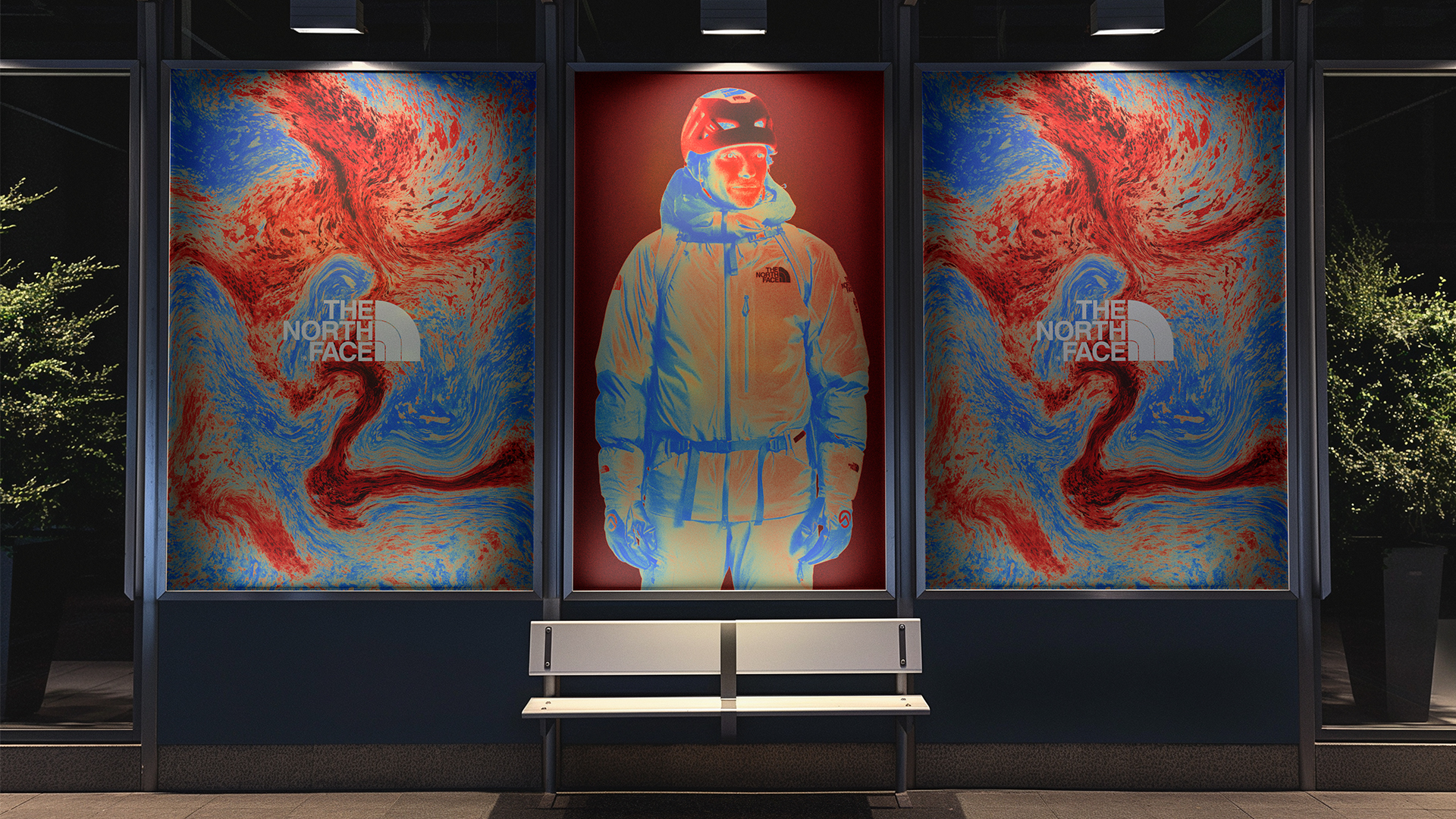Concepting a new narrative for The North Face
This concept was developed internally at Base Camp Studios as a creative proposal for The North Face—aimed at reframing how audiences connect to extreme weather.
Rather than focusing on gear specs or athlete heroics, We Face Storms explored the emotional weight of weather. Using live storm data and a child’s perspective, the concept aimed to create a slow-build narrative where exposure becomes empathy—where the map becomes the message.
The Concept
We Face Storms opens with a live weather map.
A storm system builds in the corner. Colours move slowly across the screen. There’s no music—just sound. Wind. Distant rumbles. Rain against glass.
We cut to a young girl at home. She watches the weather shift—on the screen, out the window, in the world. As the storm strengthens, we follow her through a sequence of vignettes:
- walking through town in rising wind
- zipping up a jacket
- taking shelter with friends
- standing still, eyes closed, in the rain
The jacket she’s wearing? It’s a North Face shell. Not overtly styled. Not a campaign prop. Just there—functioning, grounding her.
The voiceover is minimal. It’s not her voice—it’s ours.
“We don’t run from the storm.
We move through it.
We listen.
We face storms.”
What We Developed
- Core Concept & Narrative Arc
A story designed to move slowly, build tension without noise, and reframe the storm as something to engage with—not conquer. - Visual Language & Directional Board
Developed moodboards and visual references centred on:- live satellite weather data as design layer
- sound and texture as story
- grounded, unstyled casting choices
- real-time weather as narrative driver
- Tone & Copy
Wrote initial script fragments and brand copy for voiceover, OOH extensions, and social rollouts. The language avoids cliché or drama, opting for calm repetition and resolve. - Modular Extensions
The idea was built to flex—into experiential installations (weather rooms), interactive map-led campaigns, or static print tied to storm tracking data.
Why It Mattered
This wasn’t a film about outerwear. It was a study in how weather makes us feel.
By grounding the story in a child’s perspective, we opened up space for wonder, fear, comfort, and resilience. And by pairing it with real-time storm data, we connected personal experience with global systems—anchoring the personal in something bigger.
Status
We Face Storms remains a speculative concept, developed as part of Base Camp Studios’ internal slate for creative alignment with The North Face.
It reflects our ongoing belief that the outdoors isn’t just a stage for performance—it’s a system we move through, emotionally and physically. The best kit doesn’t make you louder. It lets you stay quiet, and keep moving.










